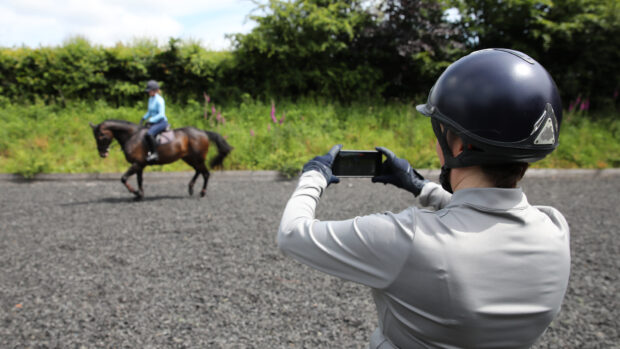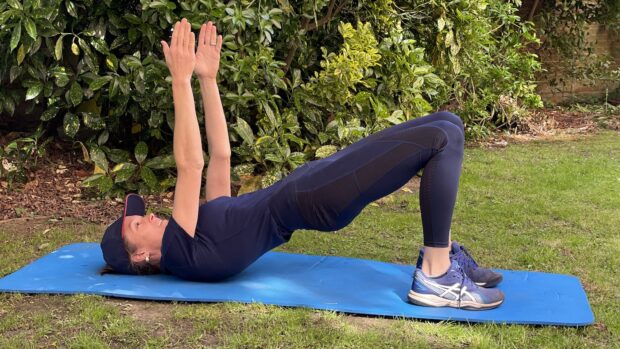While it’s always recommended to mount your horse from a sturdy mounting block in order to reduce the forces that research has shown are applied to a horse’s back when a rider gets on, most riders will occasionally find themselves in situations when they need to get on their horse from the ground during their riding life.
While teaching the horse to stand on request alongside a gate, log, stump or simply on slightly lower ground than the rider is, can certainly help, having the appropriate skills, strength and flexibility to mount successfully from a less than ideal position while having as small an impact on your horse as possible has to be positive too.
“For a lot of us, trying to mount a horse from the ground can cause pain or discomfort,” says Katie Bleekman, a rider-specific fitness coach on episode 87 of The Horse & Hound Podcast. She adds that this inability isn’t just inconvenient but has an important safety element to it. If you’re out hacking or hunting and have to get off, or have a fall, you’ll need to be able to remount swiftly and safely, without causing damage to your horse’s back.
Luckily, though, it’s something that can become easier for the vast majority of riders if they put the time and effort in – and the benefits will go beyond just being able to get into the saddle.
Flexibility, mobility and strength needed to get on a horse from the ground
“The main problem for riders is a lack of flexibility and strength,” explains Katie. “Obviously it will depend on the size of your horse as well. But we all want to be able to get on a horse from the ground, wherever we are, whatever our age, without hurting the horse.
“Hip tightness is one of the biggest things affecting your ability to mount from the ground, to lift your foot to the stirrup, and this can often lead to pain as well. If you are spending a lot of time seated, whether that’s riding, driving or sitting at a desk, the front of your body will become shorter and weaker, and that will also affect your ability to hold a nice, deep seat in the saddle.”
So, what’s the solution? Working on flexibility, hip mobility and strength, in that order of priority, according to Katie.
Try introducing the following stretches into your warm-up or fitness routine, holding each for 30-40 seconds, and working on controlling your breathing throughout.
- Lie on your back, and hug both knees into your chest, or one at a time.
- Sit on the floor with your legs outstretched, as wide as possible. Use a foam roller or a water bottle to place your hands on in front of you and gradually roll them away from your body to increase the stretch.
- From standing, slowly roll your body down, starting with your head, then vertebrae by vertebrae through your back to get as close as you can to touching your toes
- Sit on the floor and bring one heel in towards you groin, and drop your knee out in external rotation
“It’s really important when stretching to work with your range of motion, and not to over stretch until you’re in pain,” says Katie. “Doing stretches consistently over time will help them feel more comfortable, and make things like getting on from the ground easier.”
Next, add five minutes of hip mobility into your warm-up before riding, with the following exercises – that can all be done standing.
- Take one knee out to the side and draw circles with your knee. Aim for 8-10 on each side
- Hold onto a stable door for support as you swing one leg forward and back, moving from the hip. Aim for 8-10 on each side
- Roll down slowly from standing to touch your toes (if you can), then roll back up to standing.
“If you go through these exercises three times before riding, you’ll feel warmer and more agile by the time you come to get on,” says Katie.
To find out more about Katie and her services, check out eventriderfitness.com.
You may also be interested in…

How to improve your balance to help boost your riding skills

Rider fitness: what do we really mean by ‘core’ and how does it work?

How many calories do you burn riding and looking after horses? Find out…

Subscribe to Horse & Hound magazine today – and enjoy unlimited website access all year round
Horse & Hound magazine, out every Thursday, is packed with all the latest news and reports, as well as interviews, specials, nostalgia, vet and training advice. Find how you can enjoy the magazine delivered to your door every week, plus options to upgrade your subscription to access our online service that brings you breaking news and reports as well as other benefits.




